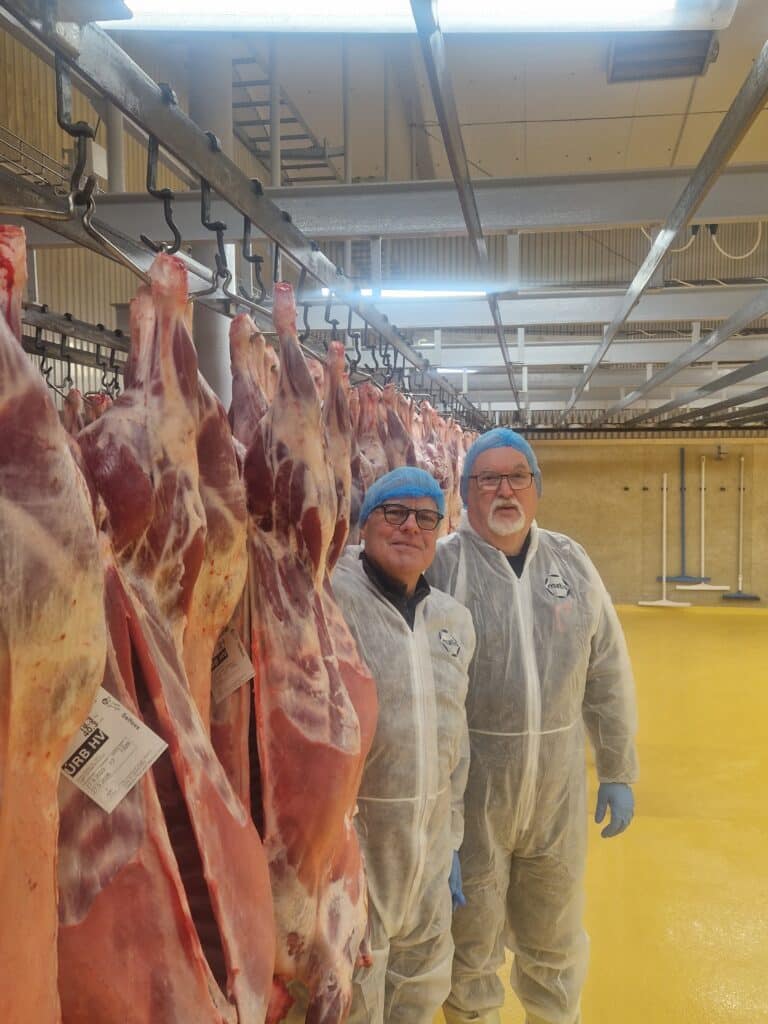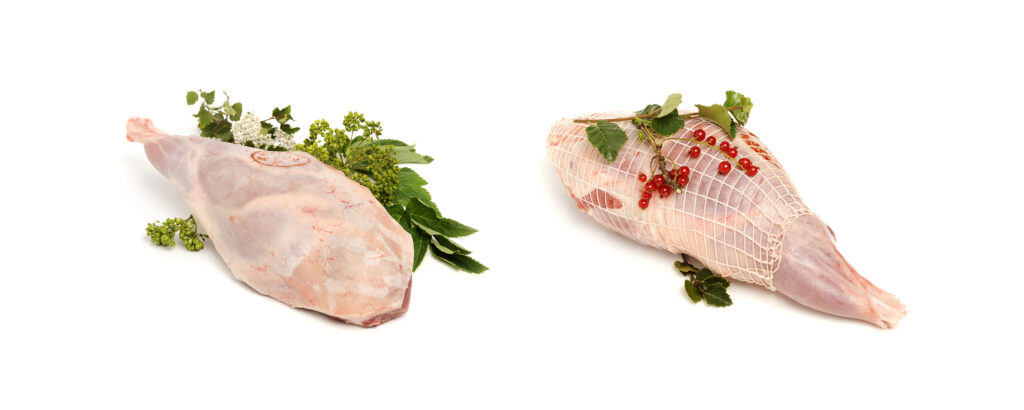At Matís, we work on diverse research and development projects on meat in collaboration with producers and various stakeholders. The goal is to strengthen domestic meat production and promote value creation. Recently, a project funded by the Food Fund and entitled Discection yields and nutrient value of Icelandic lamb meat and organs and was won by Matís and the Icelandic lamb marketing agency.
The project was carried out in close cooperation with the production centers Kjarnafæð-Norðlenska /SAH Afurðir in Blönduós, Sláturfélag Suðurlands and the meat production center of Kaupfélag Skagfirðinga. The project was launched so that it would be possible to provide new and reliable data to replace the 20-30-year-old data that was always relied on and had become obsolete. The lack of new and up-to-date data on utilization and nutritional value led to high marketing efforts for lamb meat and side products both on the domestic and export markets.
In the project, an assessment was made of utilization rates within the meat assessment categories of lamb, but lamb meat is generally classified into 40 categories at the slaughterhouse, and farmers are paid accordingly. In recent years, farmers have carried out extensive breeding work based on data they have collected in a central database, thereby increasing the productivity of meat per sheep by approx. 30%. This means that the types of meat that are most common today in terms of the ratio of muscle and fat to bone are completely different from those that were most common 20-30 years ago. The data that was used on the Icelandic market did not reflect the actual situation of Icelandic lamb meat well enough before this study was started. In addition, there was a lack of new data on nutrient values, as that data was also about 20-30 years old. Such measurements are useful for those who want to justify that the product is wholesome, tasty, has some uniqueness, etc. The third starting point of the study was an examination of whether the meat assessment carried out in Iceland was fair and adequate.

It was considered important that the quantity and quality of the research material would reflect the population well so that the results obtained would be significant and durable. Therefore, 63 carcasses from seven meat grade categories were selected, covering the 92% production based on the division into meat grade categories in 2021. Carcases were selected on three different slaughter days, in two slaughterhouses, in the north and in the south, and the head of the meat grading department at the Food Agency confirmed that each carcass was a traditional carcass in own rating category and not on the category's boundaries.
The proportion of meat, fat and bones in different quality categories confirmed that meat food in Iceland is realistic and in accordance with the definitions behind the food according to the European model. Here you can read the report in its entirety and view a detailed description of the measurements.
Measurements were then made of nutrients and heavy metals and updated figures were entered The ÍSGEM nutrient database. The measurements were made on lamb pieces and lamb meat products, lamb offal and other by-products such as liver, kidneys, hearts, lungs, testicles, esophagus, pancreas, spleen, and blood.
It turned out that the lamb meat was so rich in vitamin B12, vitamin folate, potassium and zinc that it is permissible to label these substances as part of the meat's nutrition labeling on packaging. The heavy metals mercury, cadmium, lead and arsenic were not measurable in the meat, i.e. were below the limits that could be safely measured. This limit is very low and therefore the possible concentration of heavy metals is extremely low.
The lamb offal and by-products are rich in iron and selenium, but these substances are important nutrients. In the case of significant quantities, labeling of food packaging is permitted according to the labeling regulations. The heavy metal cadmium was detectable in liver and kidney but not in other samples. Mercury, lead and arsenic were not measurable in the samples, although with the exception that mercury in the kidneys was measurable.
These results from the chemical measurements are truly interesting and give ample reason for improving the labeling of these products and providing information to stakeholders and the public..

Hafliði Halldórsson, manager of the Icelandic lamb marketing agency, and Óli Þór Hilmarsson, project manager at Matís, discussed the implementation and results of the project in new episode of Matvælin, Matís' podcast about research and innovation in food production. It is both fun and informative to listen to these professionals talk about the issue that is clearly dear to them. The podcast is available on all major podcasts and also in the player below.
Important results made available
A large number of people will be able to benefit from the results of this project. For example, all production centers in sheep slaughter as well as processing companies, innovative companies, retailers, farmers who practice home processing and other small producers will receive accurate data that increases efficiency in planning, cost and margin calculations during processing and product price estimation.
Small producers in innovation have a great need for up-to-date and accurate data on the chemical content of raw materials, to confirm the nutritional content and healthiness of their products. The weight of side products in the industry's income base is one of the biggest opportunities of the future, and all data that confirms claims about the purity of products and the high value of essential nutrients are therefore extremely important.
Retail stores, specialty stores, restaurants, institutions and canteens will also be able to use the data to benefit their operations and re-evaluate nutritional content labels. The results are also useful for teaching and research in agriculture, meat industry and cooking.
Sigurgeir Höskuldsson product development manager at Kjarnafæð Norðlenska and Benedikt Benediktsson production manager at SS agree that research on the chemical content of lamb meat is useful when it comes to calculating the nutritional value of meat products produced. For obvious reasons, it is not possible to measure every single product, but it is important to have access to a nutrient database that is up-to-date and with the best possible information. The results will be useful both for packaging labeling and also for marketing purposes.
Ægir Friðriksson, Head of Culinary Arts at the College of Education in Kópavogur mentions that in the chef's world not much attention is paid to meat evaluation because production centers and distributors classify the meat, but it is all the more important that chefs are aware of the difference in terms of utilization rate and meat quality. This report provides a good insight into how meat consumption and utilization go together.
María Guðjónsdóttir, professor at the Faculty of Food and Nutrition, University of Iceland mentions that a life cycle analysis of the lamb value chain is currently under review at the university. Higher utilization from lamb meat production means a relatively lower environmental impact per edible piece, especially when considering the environmental impact of the proteins, which are the main consumption component. The analysis shows that the production of Icelandic lamb is on a similar path environmentally as production in other countries. The lamb also has a particularly strong effect on the country's food security, as the sheep need less imported feed and fertilizer than many other animals. Detailed analyzes like those presented in Matís' lamb report are necessary for continued research into both the quality, utilization, and environmental impact of our value chains. In addition, it can be mentioned that HÍ and Matís are part of a pan-Nordic research network that focuses on meat research in the Nordic countries. The results of the report are used in comparative research on the quality and utilization of lamb meat between countries.
